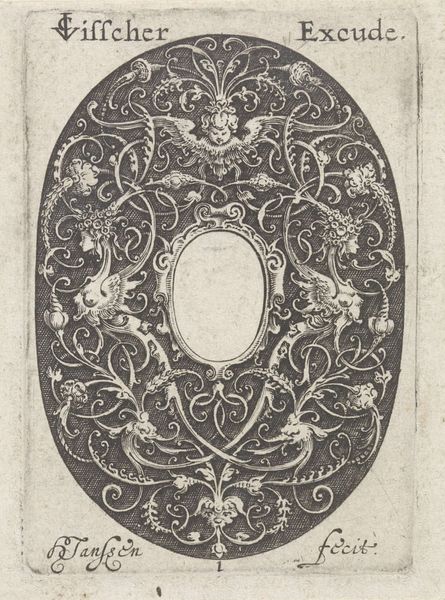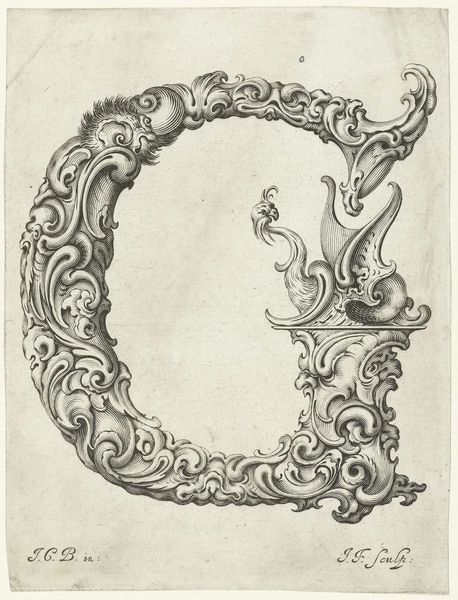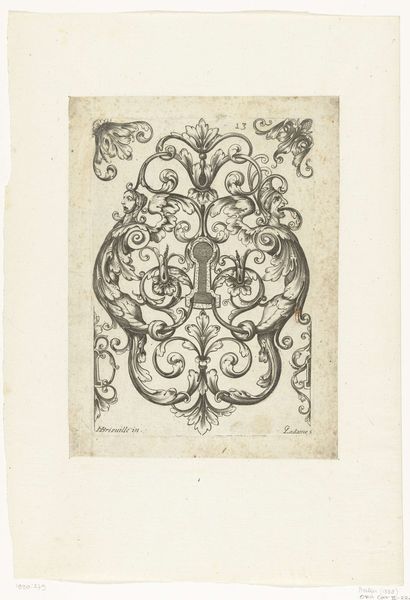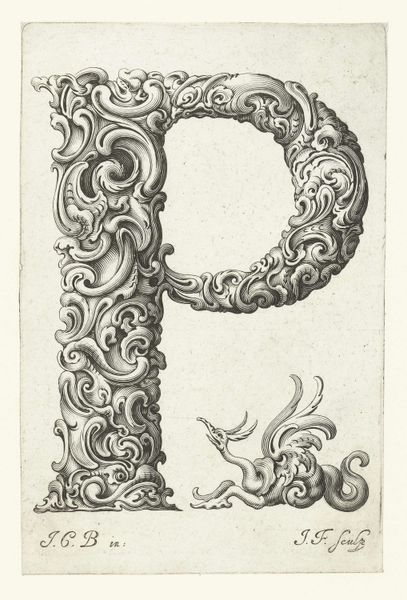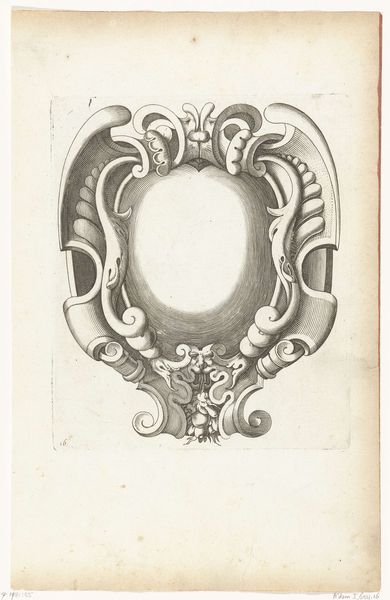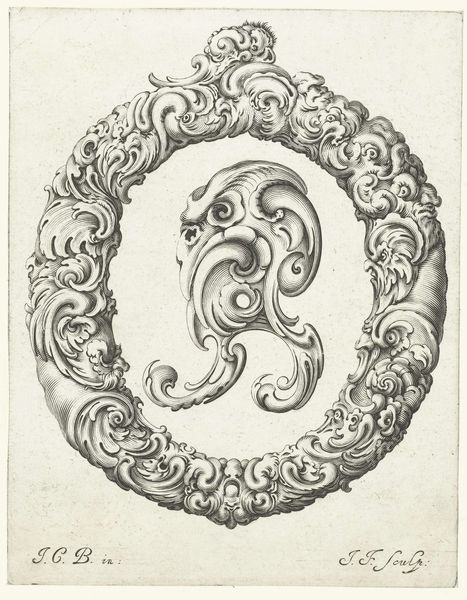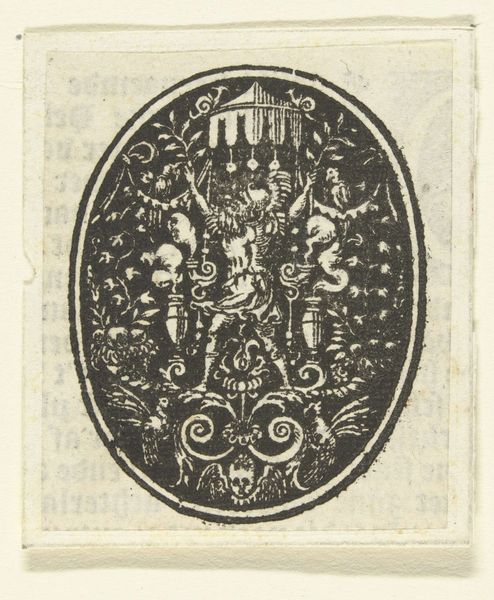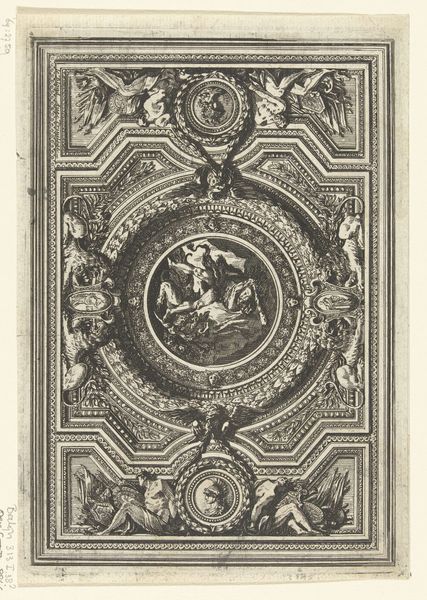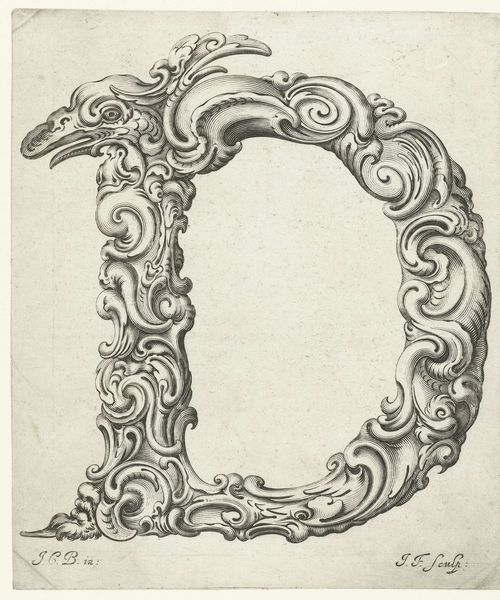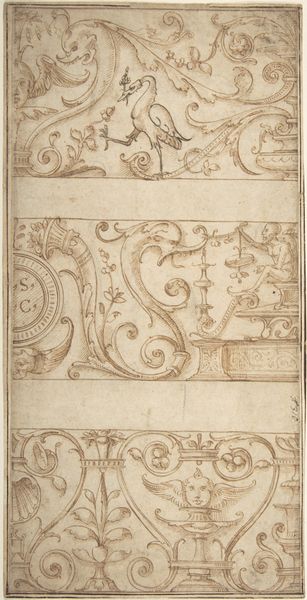
print, engraving
#
baroque
# print
#
old engraving style
#
figuration
#
engraving
Dimensions: height 72 mm, width 17 mm
Copyright: Rijks Museum: Open Domain
Curator: Before us is a Baroque engraving entitled "Strook met twee putti," meaning "Strip with two putti," dating from before 1676. It's currently housed in the Rijksmuseum. What are your first impressions? Editor: Well, first, the cherubs—putti, rather—look less like chubby babies and more like small, muscular wrestlers. There's something about the shading and the detail that gives them this sort of raw energy. Plus the strip format, it looks like part of some grander ornamental scheme, maybe furniture. Curator: Exactly. These prints, produced in multiples, would have circulated widely and offered patterns and inspiration for artisans. Consider how the proliferation of prints influenced design aesthetics and craftsmanship of the period. Editor: It’s so clever how the blank roundel sits between the two putti, almost like it's inviting us to fill it. Do you think it was intentional, maybe to frame a coat of arms or something equally grandiose? Curator: Undoubtably! In Baroque design, this space, the strip format as a whole, would lend itself well to heraldry, dedicatory inscriptions, or the personal emblem of the patron commissioning the design. Prints played an important role in propagating ideas. Editor: Speaking of ideas... it's easy to see the putti as standard Baroque fluff, all cherubic innocence and religious overtones, but looking again there's something almost manic about them, caught in a strange little game that they only seem to comprehend. Curator: And within the broader context of the Baroque period, characterized by grandeur and emotional intensity, this mania you identify resonates with the era’s dramatic flair and religious fervor. It challenges us to consider how religious themes manifested themselves in daily and decorative objects. Editor: Yes. It really encapsulates a time, doesn't it? Anyway, those little cherubic wrestlers—a testament to the way art whispers secrets across time, each one echoing the cultural history it grew from. Curator: Precisely, and by studying prints like this, we gain insights into both the artistic and cultural ecosystems of their time.
Comments
No comments
Be the first to comment and join the conversation on the ultimate creative platform.

